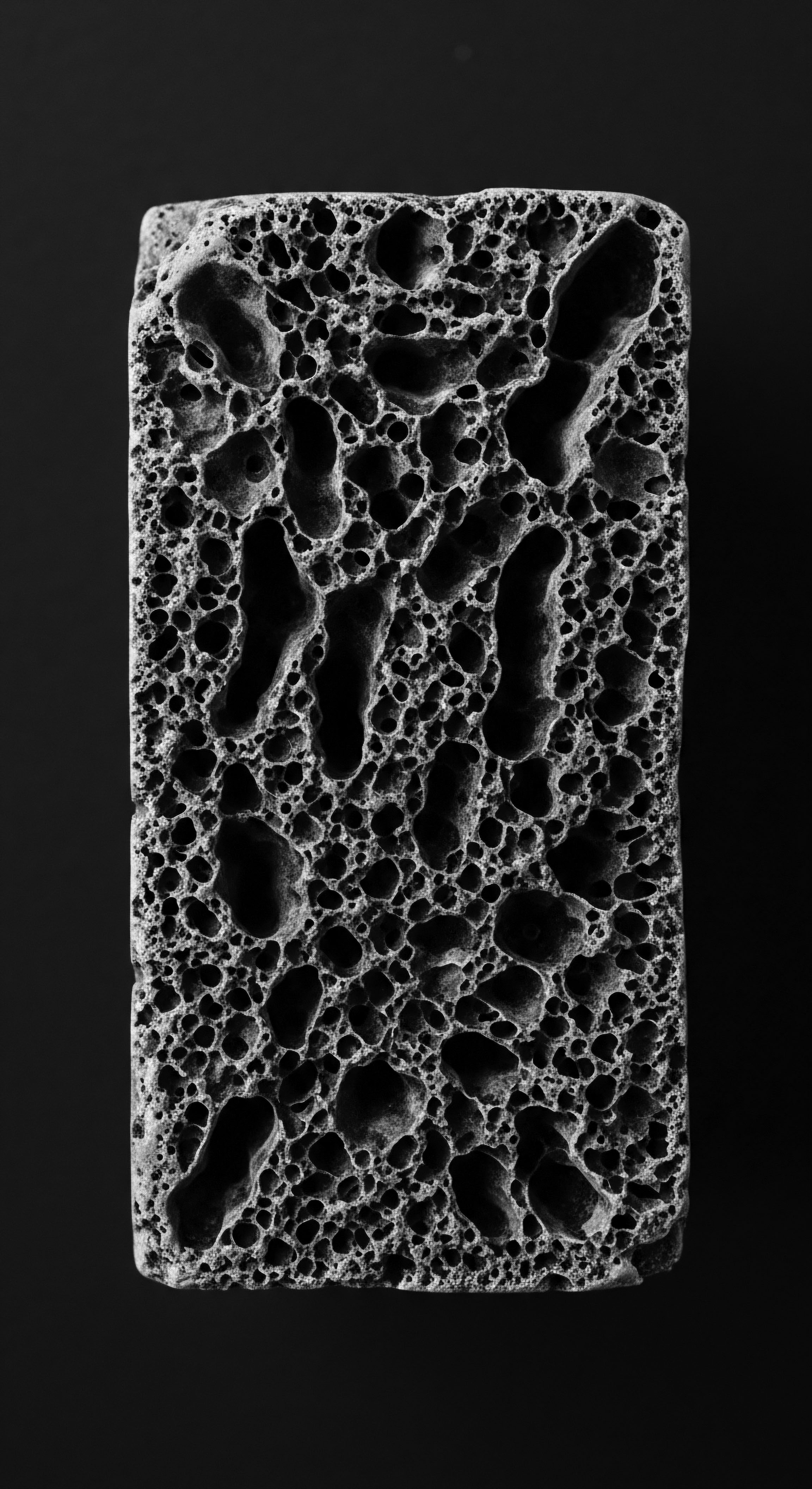
Fundamentals
The very meaning of Educational Equity, when observed through the lens of Roothea’s ‘living library’ and the profound ‘Soul of a Strand’ ethos, begins with a recognition that access to knowledge and opportunity must be just and impartial for every learner. It is not merely about providing identical resources to all, for such an approach often overlooks the varied starting points, the inherited challenges, and the unique cultural wealth each student brings to the learning space. True Educational Equity, as we understand it within the sacred sphere of textured hair heritage, calls for an intentional, responsive cultivation of environments where every individual, particularly those whose identities are intricately tied to Black and mixed-race hair traditions, can flourish without impediment. It is a commitment to dismantling barriers that have historically obscured pathways to understanding, ensuring that the inherent dignity and ancestral wisdom carried within every coil, curl, and loc are not only respected but also celebrated within educational frameworks.
Consider the initial echoes from the source, where hair was an elemental biology, a natural expression of lineage and climate. Ancient practices revered hair as a conduit for spiritual connection, a marker of tribal affiliation, and a symbol of wisdom passed down through generations. The deliberate shaping of hair, whether through intricate braiding, the application of natural elixirs, or ceremonial adornments, was a living curriculum, taught and learned within communities.
This informal yet deeply structured educational system, rooted in ancestral wisdom, laid the groundwork for communal understanding and the transmission of vital cultural knowledge. When we speak of Educational Equity, we are, in part, acknowledging the historical dislodging of these organic learning systems and the subsequent imposition of structures that often devalued or ignored such profound heritage.
Educational Equity means creating learning spaces where every student, especially those with textured hair, finds their ancestral wisdom honored and their unique path to knowledge unobstructed.
The core of this concept, in its simplest interpretation, involves fair distribution of educational tools and opportunities. Yet, for those whose ancestral stories are etched into their hair, this fairness extends far beyond textbooks and classrooms. It includes the implicit lessons taught by society about worth, belonging, and beauty.
For centuries, educational systems, consciously or unconsciously, propagated Eurocentric beauty standards that marginalized textured hair. This marginalization was not merely aesthetic; it was a profound educational inequity, teaching generations that their natural selves were somehow less worthy, less “professional,” or less capable of academic success.
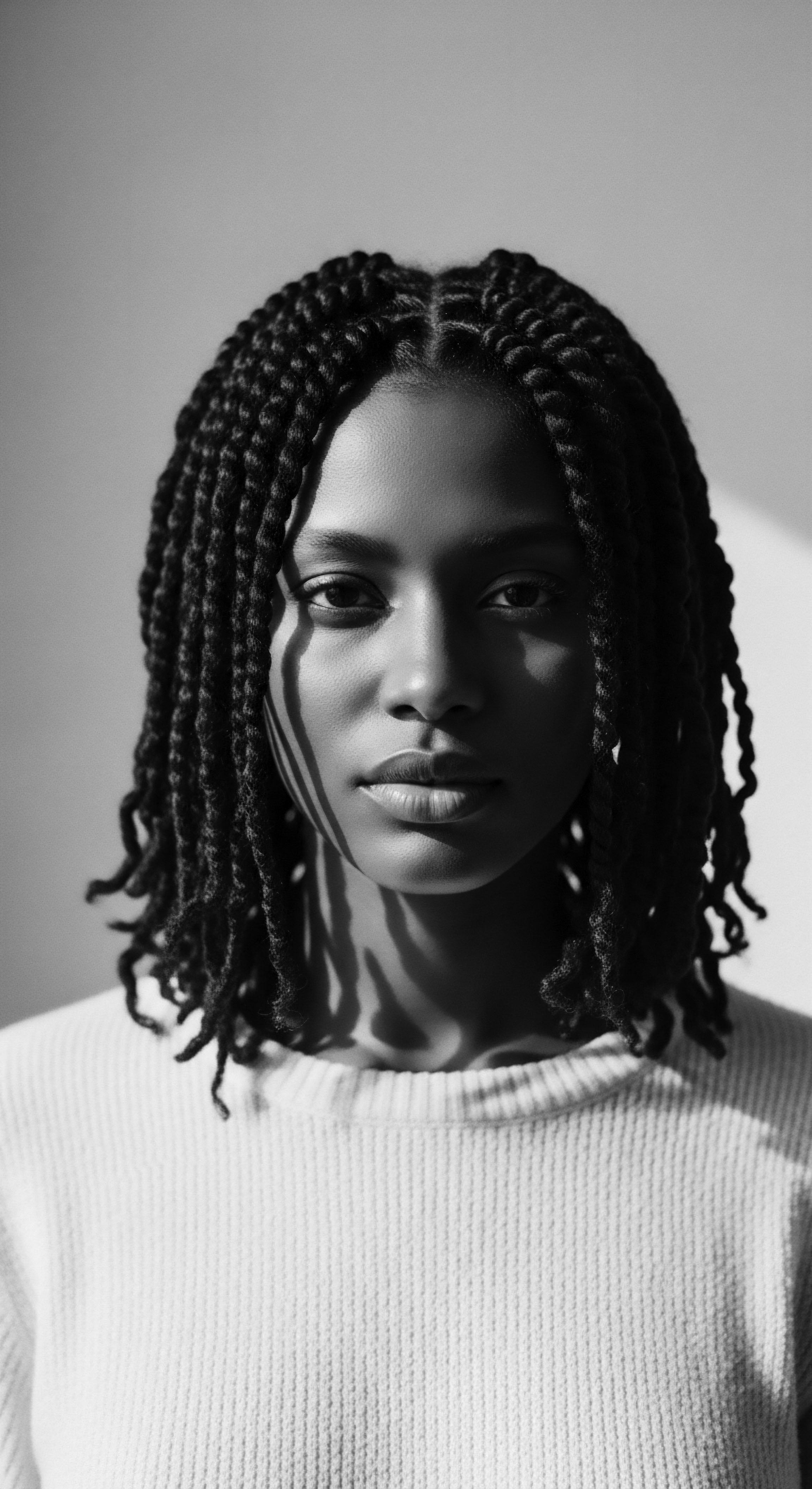
Historical Foundations of Hair and Learning
The journey of Educational Equity for textured hair begins in the distant past, where hair served as a fundamental aspect of communal pedagogy. Before formalized institutions, knowledge transmission occurred through observation, storytelling, and direct instruction within family and community units. Hair practices, often performed communally, became sites of learning about botanicals, geometry in braiding patterns, patience, and intergenerational bonding.
These were early forms of holistic education, where the tender thread of care for hair intertwined with lessons about self, community, and the natural world. The significance, the profound sense of belonging tied to these practices, was a foundational aspect of identity formation and collective learning.
- Oral Traditions ❉ Ancestral stories and lessons, often passed down during hair grooming sessions, taught history, ethics, and practical skills.
- Botanical Knowledge ❉ The identification and preparation of natural ingredients for hair care, such as Shea Butter or Black Soap, were integral parts of indigenous knowledge systems.
- Artistic Expression ❉ Complex braiding patterns, like Cornrows or Bantu Knots, served as visual texts, conveying social status, marital status, or tribal affiliation.
The imposition of colonial educational models often disregarded these deeply rooted learning pathways, asserting a different, often alien, curriculum. This shift initiated a subtle but pervasive form of educational disparity, where the very cultural markers that defined identity became grounds for exclusion or assimilation within new learning environments. The denial of ancestral hair practices within schools, sometimes through explicit bans or implicit biases, meant a denial of a student’s full cultural self, thereby creating an uneven playing field for their educational journey.

Understanding Hair-Based Disparity
In modern contexts, the basic explanation of Educational Equity related to textured hair often points to overt acts of discrimination. These actions, such as school policies banning natural hairstyles like Locs, Braids, or Afros, directly hinder a student’s ability to participate fully in the learning environment. When a student faces suspension or expulsion for their hair, they are not only deprived of instructional time but also sent a clear message that their identity is unwelcome. This experience creates a profound educational disadvantage, impacting their academic trajectory and psychological well-being.
| Historical Era Pre-Colonial Ancestral Systems |
| Dominant Hair Norms (Eurocentric Influence) Diverse, culturally significant, natural styles |
| Impact on Textured Hair in Education Hair as a teaching tool, community bonding, identity reinforcement |
| Historical Era Post-Colonial/Slavery Eras |
| Dominant Hair Norms (Eurocentric Influence) Pressure for straightened, "tamed" hair |
| Impact on Textured Hair in Education Forced assimilation, devaluing of natural textures, early forms of discrimination |
| Historical Era Civil Rights Era (Mid-20th Century) |
| Dominant Hair Norms (Eurocentric Influence) Emergence of Afro as a symbol of pride |
| Impact on Textured Hair in Education Resistance to Eurocentric norms, but continued institutional pushback |
| Historical Era Contemporary (21st Century) |
| Dominant Hair Norms (Eurocentric Influence) Growing natural hair movement, CROWN Act efforts |
| Impact on Textured Hair in Education Persistent discrimination, legal battles for protection, calls for cultural competence |
| Historical Era The journey towards equity in hair practices within education reveals a continuous struggle against imposed standards and a persistent assertion of cultural identity. |
The consequences of such policies extend beyond mere disciplinary records. They chip away at a student’s self-esteem, making them feel alienated and misunderstood. The concept of Educational Equity here demands that schools become spaces of affirmation, where the diverse heritage of every student is seen as a source of strength, not a cause for punitive action.
It calls for an understanding that hair, for many, is not merely a cosmetic choice but a deep expression of ancestry, resilience, and selfhood. The clarification of this meaning requires a recognition of the subtle and overt ways bias can impede a child’s learning journey, beginning with their very appearance.
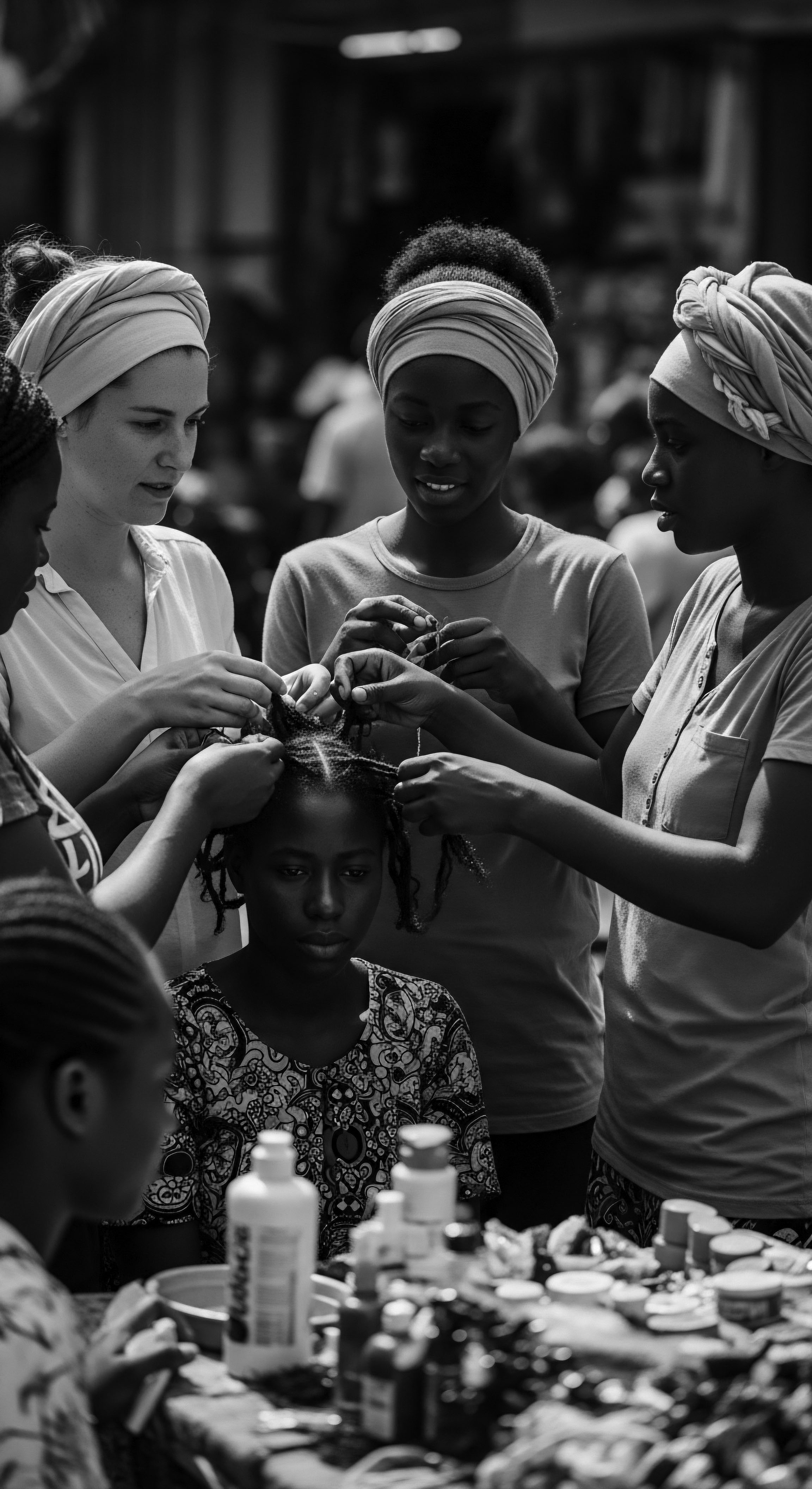
Intermediate
Moving beyond the foundational understanding, the intermediate meaning of Educational Equity, particularly through the lens of textured hair heritage, calls for a deeper examination of systemic biases and their enduring impact. It is not enough to simply identify overt discrimination; one must scrutinize the underlying structures and unexamined assumptions that perpetuate disparity. This level of understanding requires a more nuanced interpretation of how historical injustices, particularly those related to the devaluation of Black and mixed-race hair, continue to shape contemporary educational experiences. It compels us to see Educational Equity as an ongoing process of remediation and cultural validation, acknowledging the persistent echoes from a past where ancestral practices were often dismissed as primitive or uncivilized.
The tender thread of communal hair care, once a vibrant pedagogical practice, became a site of profound struggle within systems designed to erase cultural distinctiveness. The journey of Educational Equity thus involves reclaiming these narratives, recognizing how the forced assimilation of hair practices directly undermined holistic well-being and academic potential. It requires an awareness of the psychological burden placed upon students who feel compelled to alter their natural hair to conform to institutional norms, often at the expense of their authentic selves. This burden, invisible to many, profoundly impacts a student’s engagement, focus, and overall sense of belonging within the learning environment.
Intermediate Educational Equity for textured hair involves recognizing and dismantling systemic biases that devalue ancestral hair practices, understanding their profound impact on student well-being and learning.
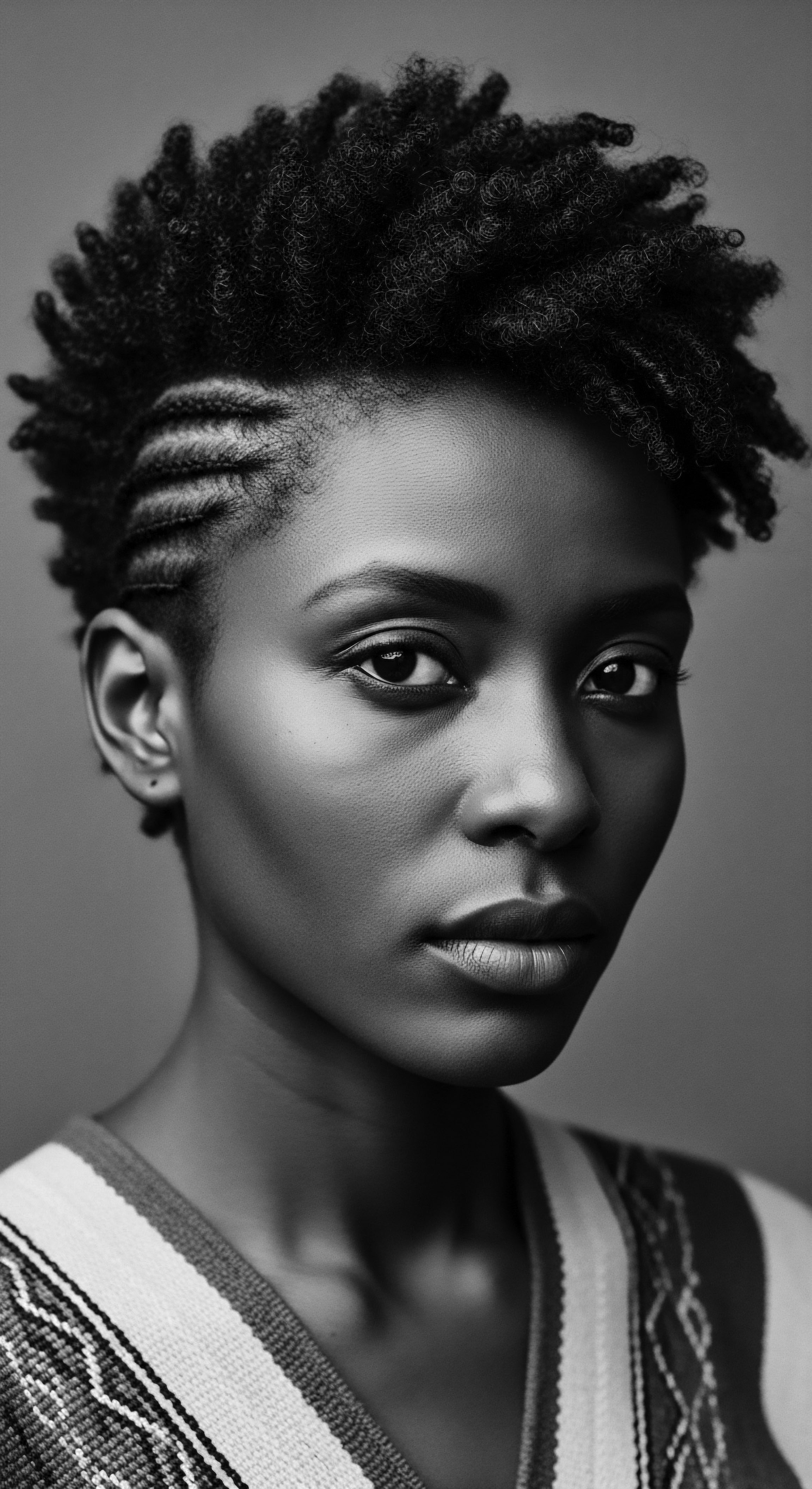
The Unseen Curricula of Conformity
Educational Equity at this level involves understanding the “unseen curricula” that operate within schools – the implicit lessons about what is considered “acceptable,” “professional,” or “beautiful.” These lessons, often unwritten and unspoken, disproportionately affect students with textured hair. When textbooks lack representation of diverse hair textures, when teachers are not equipped to understand the cultural significance of certain styles, or when media within the school environment only showcases Eurocentric beauty standards, a powerful, albeit subtle, form of educational disparity emerges. This lack of affirmation communicates a message of otherness, which can be as damaging as outright bans.
Consider the subtle pressures that lead a student to straighten their hair before a school picture day or a job interview linked to an academic program. These are not merely personal choices; they are often responses to perceived or actual expectations within an educational ecosystem that has historically penalized natural Black hair. The elucidation of Educational Equity, in this context, calls for an active re-education of institutions themselves, fostering an environment where cultural authenticity is not only tolerated but actively celebrated as a valuable asset. The delineation of equitable practices must therefore include comprehensive training for educators on cultural competence regarding textured hair, alongside a review of all school materials for diverse representation.
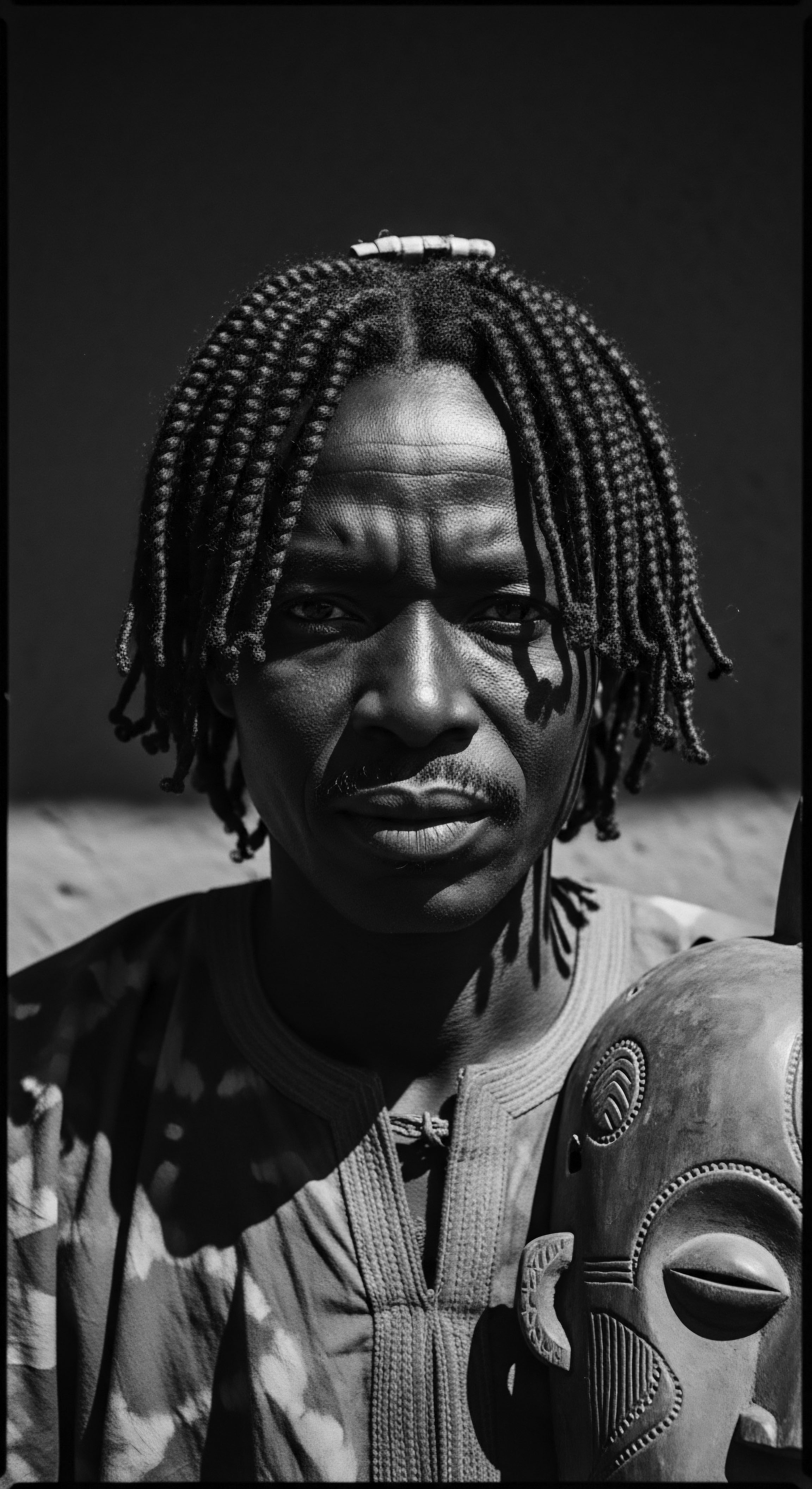
Beyond Policy ❉ Cultivating a Culture of Affirmation
While policies like the CROWN Act (Creating a Respectful and Open World for Natural Hair) are significant legislative steps towards ensuring Educational Equity, their full meaning extends beyond legal mandates. The law provides a framework, but true equity requires a shift in school culture. This involves actively fostering an environment where students feel secure in expressing their textured hair heritage without fear of judgment or disciplinary action. The intention behind such efforts is to create spaces where the ancestral practices of hair care and styling are viewed as legitimate expressions of identity and cultural wealth, rather than distractions or deviations from a narrow norm.
The data surrounding hair discrimination in schools paints a stark picture of this persistent challenge. A study conducted by Dove, part of the CROWN Research Study for Girls, revealed that 66% of Black Children in Majority-White Schools Have Faced Race-Based Hair Discrimination. This alarming statistic underscores the deep-seated nature of this issue, indicating that despite growing awareness, a significant portion of Black students continue to experience prejudice simply because of their natural hair.
This experience of discrimination directly impedes their educational journey, creating emotional distress, reducing self-esteem, and potentially leading to missed instructional time due to disciplinary actions. The fact that a majority of Black children in certain school environments face this type of bias highlights a profound educational inequity that must be addressed at systemic and cultural levels.
- Teacher Training ❉ Programs that educate educators on the historical and cultural significance of Black and mixed-race hairstyles, helping to dispel unconscious biases.
- Curriculum Integration ❉ Incorporating lessons on the science of textured hair, its history, and its cultural importance into biology, history, and social studies curricula.
- Inclusive Imagery ❉ Ensuring that school promotional materials, textbooks, and classroom decorations reflect the diversity of hair textures present in the student body.
- Open Dialogue ❉ Creating safe spaces for students to discuss their experiences with hair and identity, fostering a sense of community and mutual respect.
The specification of Educational Equity, therefore, moves beyond mere compliance to a proactive commitment to cultural responsiveness. It involves understanding that hair is not just a biological feature but a powerful symbol of identity, resilience, and ancestral connection. When schools fail to acknowledge this, they inadvertently create barriers to learning that are deeply personal and culturally resonant. The path towards true equity involves a conscious effort to validate and celebrate the diverse hair heritage of every student, recognizing it as an integral component of their educational success and holistic well-being.
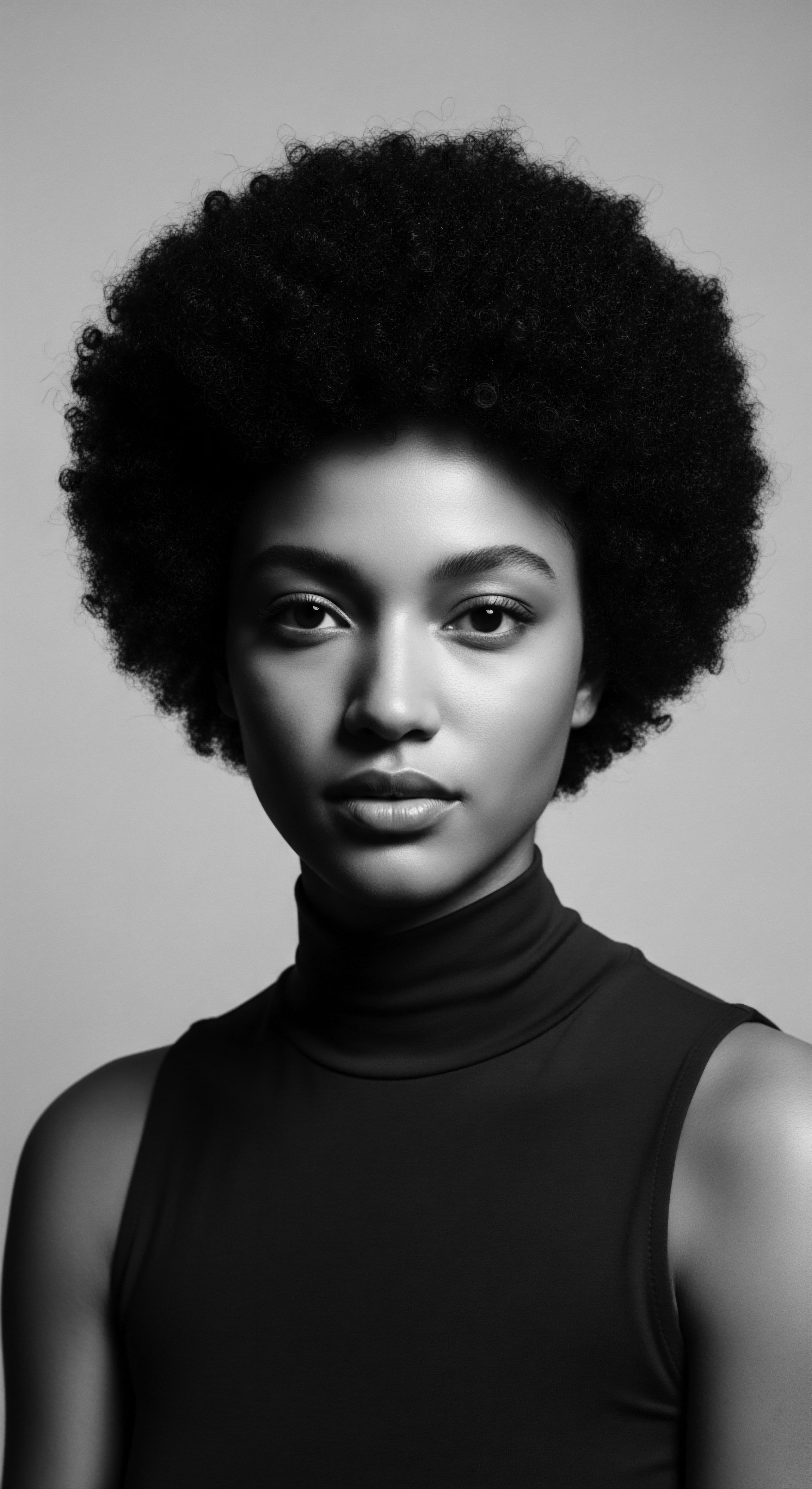
Academic
The academic meaning of Educational Equity, when rigorously examined through the intricate lens of textured hair heritage, transcends simplistic definitions to reveal a complex interplay of historical power dynamics, systemic biases, and the enduring psychocultural impact on marginalized communities. It is not merely a statement of equal access, but a profound investigation into the mechanisms by which educational systems have historically perpetuated and continue to reproduce social hierarchies, often through the subtle policing of Black and mixed-race hair. This scholarly interpretation demands a critical deconstruction of normative standards within educational institutions, understanding how they have been shaped by Eurocentric aesthetics and have, consequently, functioned as sites of cultural erasure and identity suppression for students of African descent.
The explication of Educational Equity, in this context, requires a deep dive into critical race theory and its application to educational policy, particularly as it pertains to the corporeal expressions of racial identity. The ancestral wisdom embedded in textured hair, once a vibrant pedagogical tool and a symbol of collective strength, became a target of colonial and post-slavery regimes. These regimes, seeking to control and assimilate, often utilized educational spaces to enforce conformity, effectively divorcing individuals from their inherited traditions of hair care and styling. The consequence was a profound sense of alienation, where the very biology of one’s hair became a liability within institutions ostensibly designed for enlightenment.
Academic Educational Equity critically examines how educational systems, through subtle policing of textured hair, perpetuate historical power dynamics and psychocultural impacts on marginalized communities.

Deconstructing the Coloniality of Hair in Education
The academic understanding of Educational Equity necessitates a thorough analysis of the “coloniality of hair” within educational structures. This concept posits that even after formal colonialism ends, colonial power structures persist through cultural norms, knowledge systems, and aesthetic standards that privilege the colonizer’s worldview. In educational settings, this manifests as dress codes that implicitly or explicitly ban natural Black hairstyles, curriculum omissions that ignore the rich history and science of textured hair, and a general lack of cultural responsiveness from educators. Such practices are not accidental; they are historical artifacts of a system designed to maintain racial stratification by devaluing Black identity.
Research consistently demonstrates that policies targeting natural Black hair contribute to disproportionate disciplinary actions against Black students. For instance, a Brookings Institution analysis highlighted that Black Students are Disciplined at a Rate Four Times Higher Than Any Other Racial or Ethnic Group, with 70 percent of all suspension disciplines being discretionary, often linked to dress code or hair violations. This statistical reality underscores a profound educational inequity, revealing that the very appearance of Black students, particularly their hair, can become a pretext for removing them from the learning environment.
This not only disrupts their academic progress but also reinforces a narrative of deviance, contributing to the school-to-prison pipeline. The significance of this phenomenon extends beyond individual instances; it speaks to a systemic failure of educational institutions to provide an equitable and affirming space for all students, particularly those whose racial identity is visibly expressed through their hair.
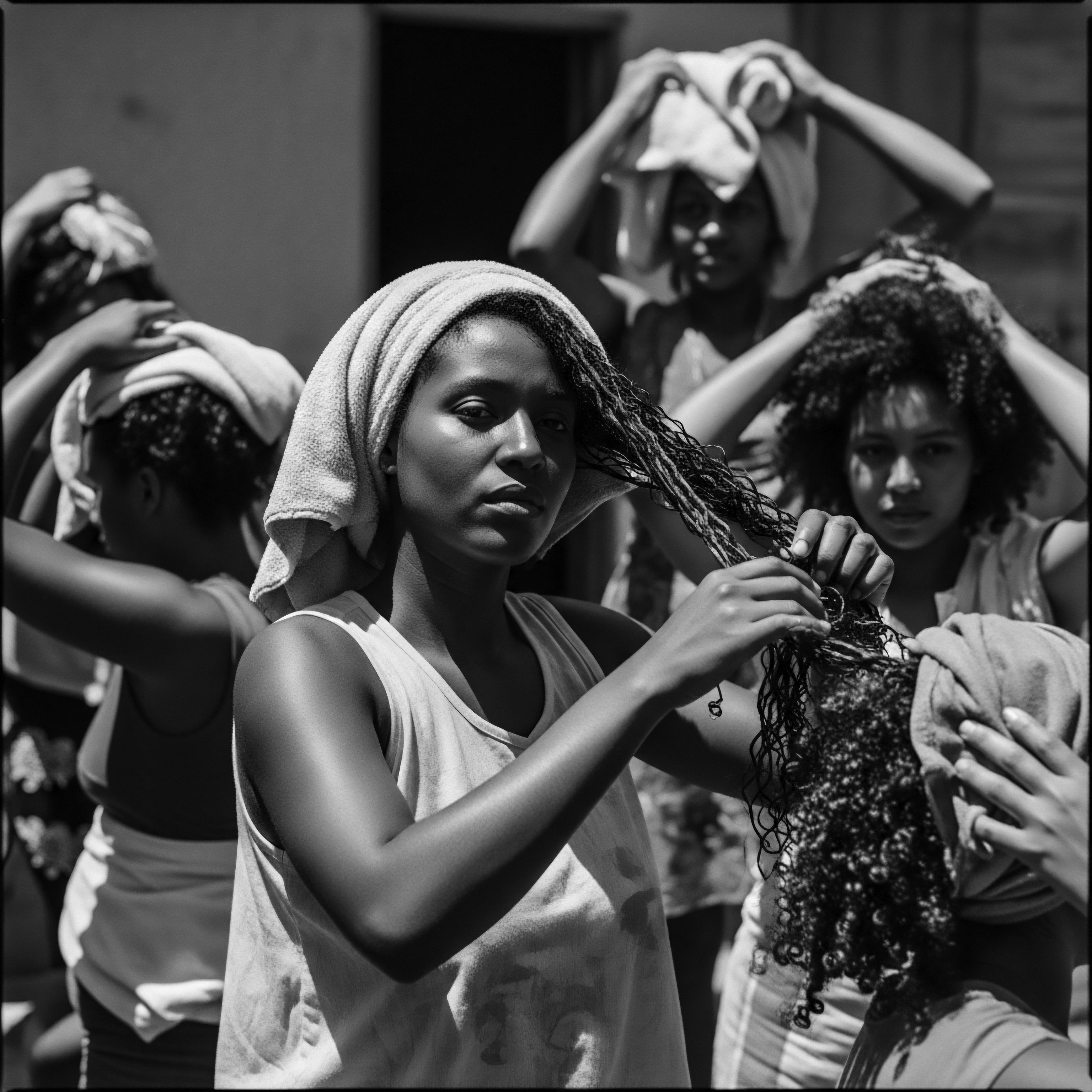
The Psychosocial Toll of Hair-Based Othering
From a psychological perspective, the consistent policing and stigmatization of textured hair within educational settings exact a significant psychosocial toll. The experience of being told one’s natural hair is “unprofessional,” “distracting,” or “unruly” can internalize feelings of shame, inadequacy, and racial self-hatred. This constant negotiation of identity within hostile environments detracts from cognitive resources that could otherwise be dedicated to learning. Students may expend considerable energy managing their appearance to conform, leading to decreased academic engagement, increased anxiety, and a diminished sense of belonging.
The essence of Educational Equity, therefore, must include a focus on psychological safety and identity affirmation as fundamental preconditions for effective learning. The long-term consequences of such experiences can shape career aspirations, self-perception, and even mental health outcomes, extending far beyond the school gates.
The interplay between individual agency and systemic constraint is a central concern. While the natural hair movement represents a powerful assertion of Black identity and self-acceptance, the persistence of discriminatory policies in some educational institutions creates a continuous tension. Students are placed in an untenable position ❉ either conform to Eurocentric standards, thereby compromising their authentic self, or risk disciplinary action and social ostracization. This dilemma, rooted in historical power imbalances, is a profound challenge to the very meaning of Educational Equity.
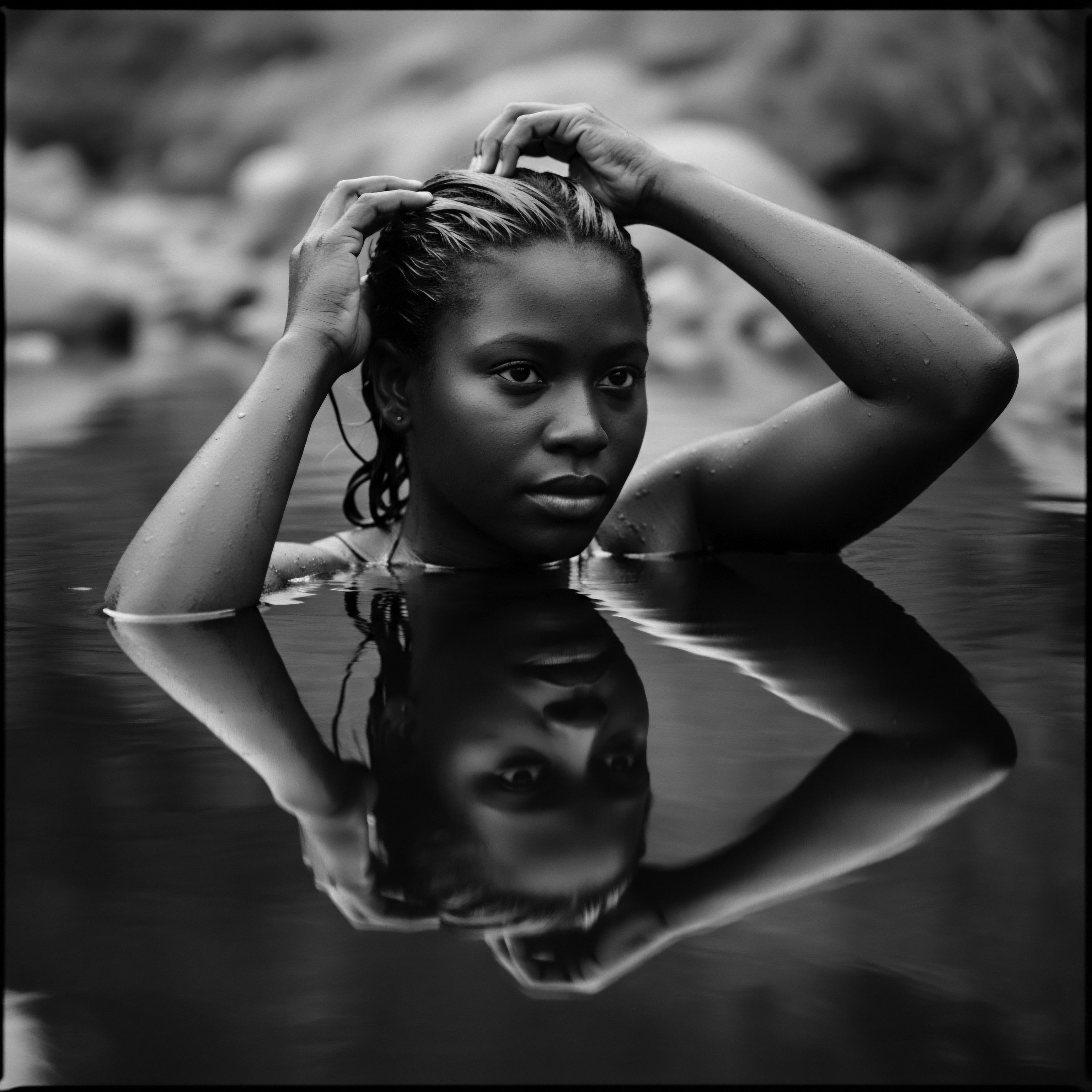
Ancestral Pedagogy and Contemporary Curricula
A truly equitable educational framework, as envisioned through a scholarly lens, would seek to re-integrate elements of ancestral pedagogy that historically nurtured holistic development and cultural pride. This does not imply a romanticized return to past practices, but rather a critical re-evaluation of how indigenous knowledge systems, particularly those related to hair and identity, can inform and enrich contemporary curricula.
- Ethnobotany and Hair Science ❉ Incorporating the study of traditional plant-based hair remedies and the unique biological properties of textured hair into science curricula, validating ancestral knowledge with modern scientific understanding.
- Cultural Anthropology of Hair ❉ Examining the diverse cultural meanings, historical evolution, and socio-political significance of hair across the African diaspora within social studies and history courses.
- Aesthetics and Identity ❉ Exploring the role of hair as an artistic medium and a tool for self-expression, fostering critical discussions about beauty standards and media representation.
- Policy and Advocacy ❉ Analyzing the historical and contemporary legal battles against hair discrimination, such as the CROWN Act movement, as case studies in civil rights and social justice.
The comprehensive exploration of Educational Equity, from an academic standpoint, thus calls for a transformative shift in educational philosophy and practice. It demands that institutions move beyond superficial gestures of diversity to a deep, structural commitment to anti-racism and cultural responsiveness. This means acknowledging the historical harms caused by hair discrimination, actively working to dismantle lingering biases, and creating learning environments where the textured hair heritage of every student is not just tolerated, but understood as a source of intellectual and cultural richness. The full delineation of Educational Equity requires nothing less than a fundamental re-imagining of what constitutes valuable knowledge and who determines its worth, always centered on the unyielding spirit of ancestral wisdom.
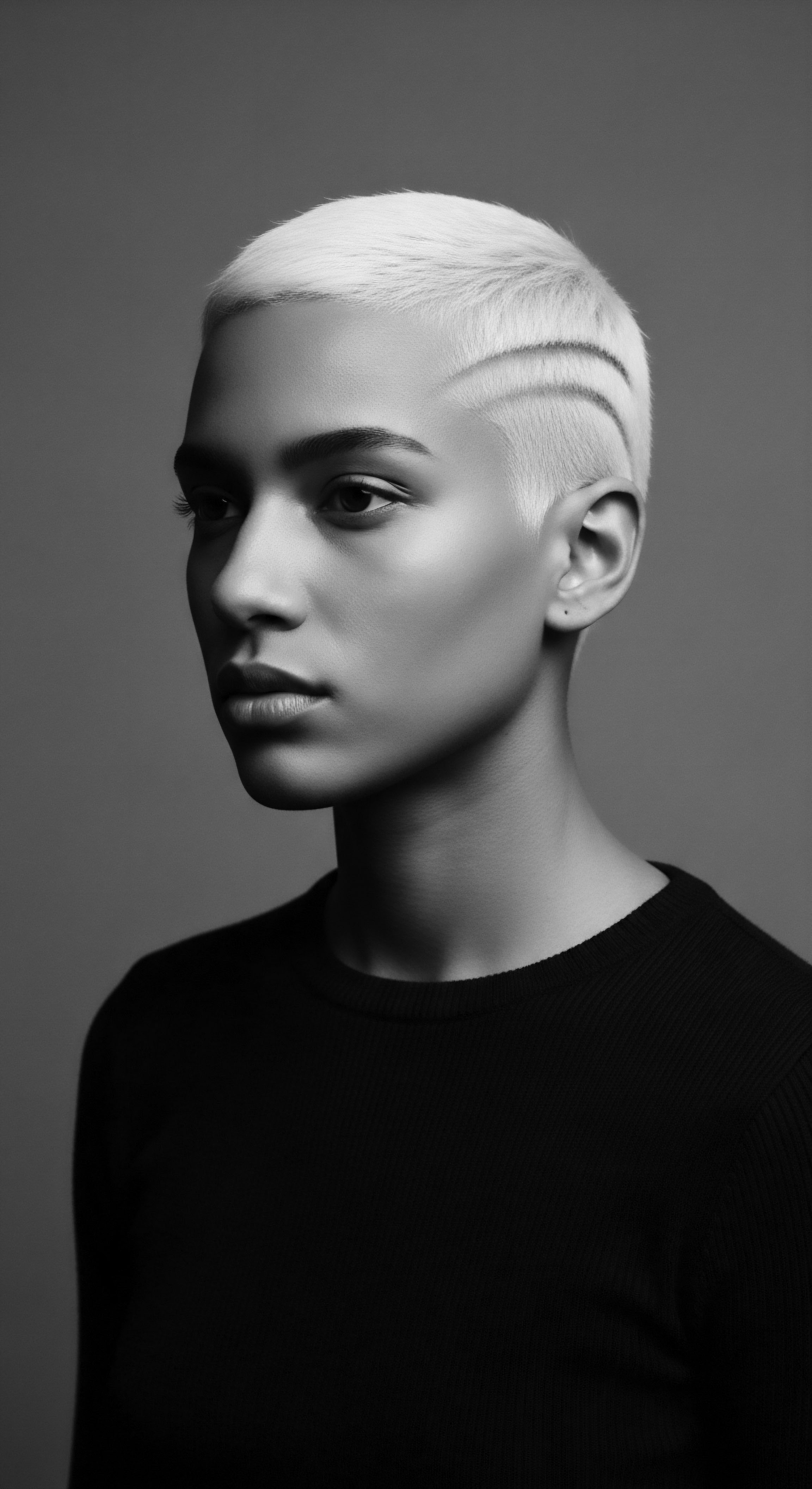
Reflection on the Heritage of Educational Equity
As we close this meditation on Educational Equity, particularly its deep connection to textured hair heritage, we are left with a resonant understanding ❉ the journey towards true fairness in learning is an unending spiral, much like the delicate helix of a strand of hair. It is a path that honors the wisdom passed down through generations, recognizing that the stories held within each coil and kink are not mere anecdotes but vital archives of resilience, creativity, and knowledge. The ‘Soul of a Strand’ ethos compels us to view Educational Equity not as a static destination, but as a living, breathing commitment to nurturing the full humanity of every student, especially those whose identities are inextricably linked to the rich traditions of Black and mixed-race hair.
The tender thread of ancestral care, once practiced in hushed communal spaces, now seeks its rightful place within the hallowed halls of academia. The struggle for Educational Equity, in this light, is a continuation of the age-old quest for self-determination and cultural affirmation. It is about ensuring that the brilliance of young minds is never dimmed by the unspoken prejudices against their natural crowns. The very definition of learning expands when it encompasses the historical ingenuity of hair braiding, the scientific understanding of melanin’s protective role, or the cultural significance of headwraps in times of both sorrow and celebration.
The path ahead requires an ongoing vigilance, a willingness to challenge the subtle manifestations of bias, and a profound respect for the diverse ways in which knowledge is embodied and expressed. When educational spaces genuinely champion the heritage of textured hair, they do more than simply prevent discrimination; they cultivate environments where every student feels seen, valued, and empowered to bring their whole, authentic self to the pursuit of understanding. This is the enduring legacy of Educational Equity, a continuous act of honoring the past while shaping a more luminous future for all.
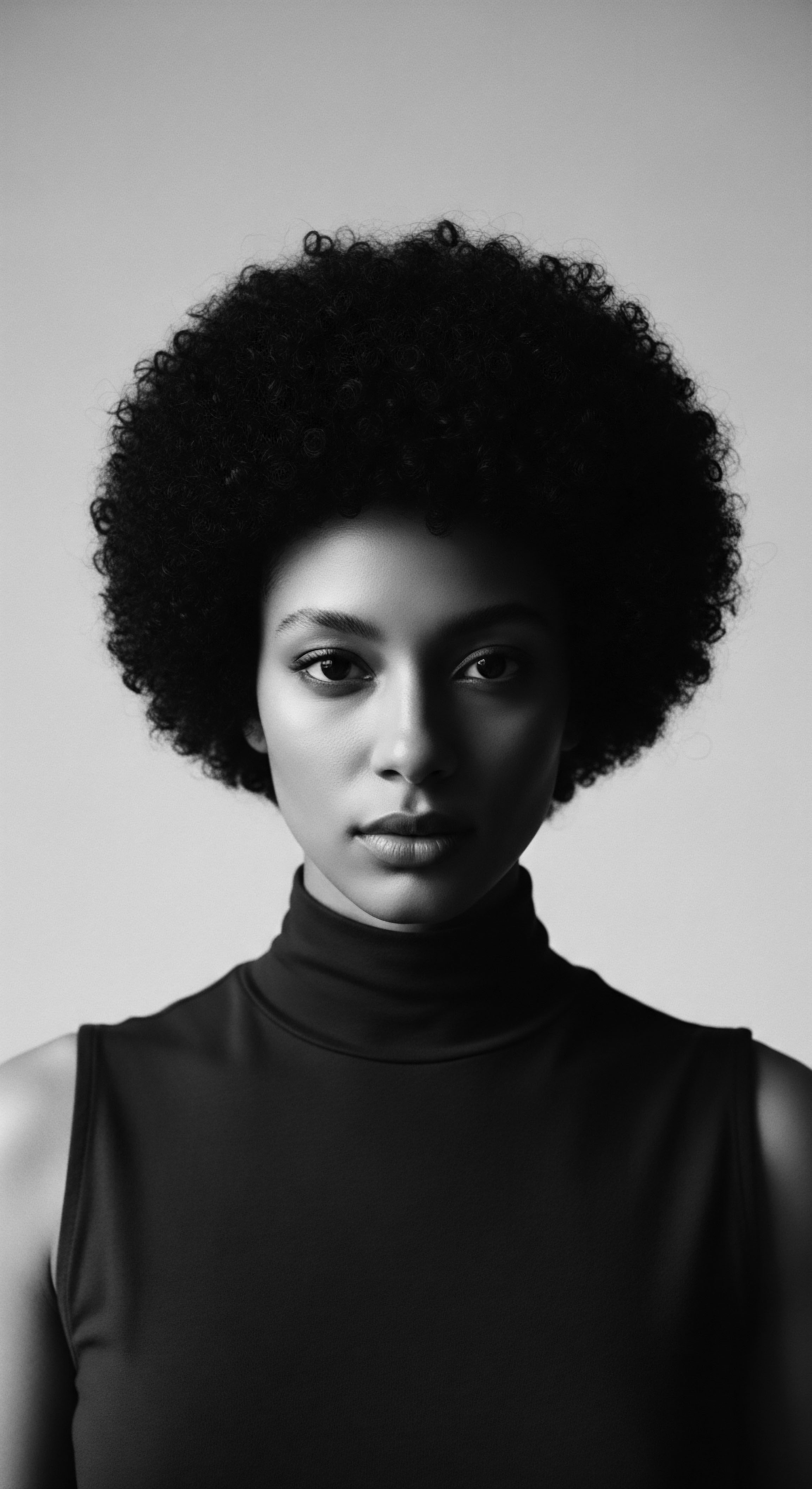
References
- Byrd, A. D. & Tharps, L. R. (2014). Hair Story ❉ Untangling the Roots of Black Hair in America. St. Martin’s Griffin.
- Childs, J. B. (2019). African American Hair ❉ A Cultural History. Palgrave Macmillan.
- Dove. (2019). The CROWN Research Study for Women .
- Dove. (2021). The CROWN Research Study for Girls .
- Griffin, T. (2019). The Black Hair Handbook ❉ A Guide to Natural Hair Care. Simon & Schuster.
- Hamilton, K. (2021). Hair ❉ A Cultural History. Bloomsbury Academic.
- Kempf, J. et al. (2024). Confronting Hair Discrimination in Schools – A Call to Honor Black History by Protecting Student Rights. IDRA.
- Owens Patton, V. (2006). Pushout ❉ The Criminalization of Black Girls in Schools. The New Press.
- Samuels, C. (2020). Hair Discrimination in Schools ❉ The Impact on Black Girls. Education Week.
- Rowe, K. L. (2023). Black Hair and Hair Texture ❉ Cultivating Diversity and Inclusion for Black Women in Higher Education. Emerald Publishing Limited.
